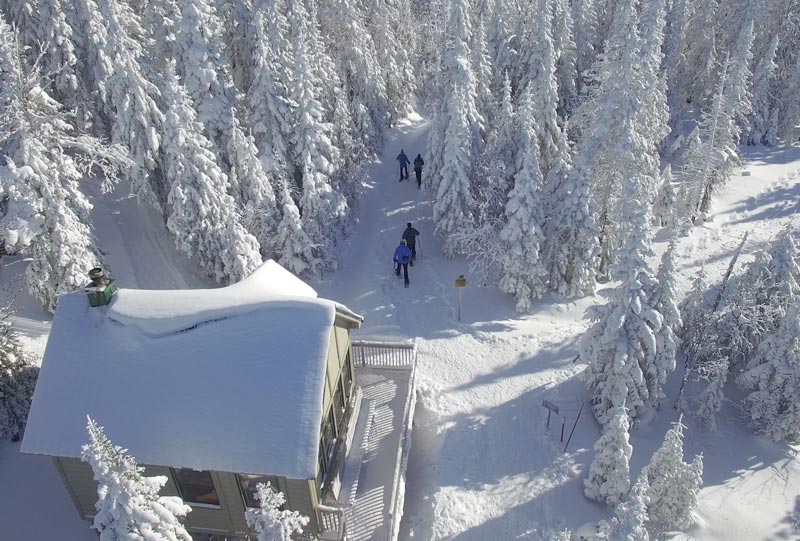Film Fixer in Canada (3)
Canada boasts numerous equipment rental companies that specifically cater to film and TV productions. At Films.Solutions, we have developed strong relationships with many of these rental companies throughout Canada. This grants us access to a vast selection of high-quality equipment and, most importantly, ensures that we can swiftly obtain replacement parts if needed. We guarantee that your production will never stall and will operate smoothly from start to finish.
Yes, you should have liability insurance to cover any damage or injury that may occur during filming. At Films.Solutions, we can provide full coverage for your production in Canada
Look no further for your film production crew in Canada - Films.Solutions is here to help. We are your go-to source for all your filming needs, including crew, talent, equipment, locations, and more. Trust us to provide the solutions you need to make your production a success.
Film Production Services in Canada (3)
Canada boasts numerous equipment rental companies that specifically cater to film and TV productions. At Films.Solutions, we have developed strong relationships with many of these rental companies throughout Canada. This grants us access to a vast selection of high-quality equipment and, most importantly, ensures that we can swiftly obtain replacement parts if needed. We guarantee that your production will never stall and will operate smoothly from start to finish.
Yes, you should have liability insurance to cover any damage or injury that may occur during filming. At Films.Solutions, we can provide full coverage for your production in Canada
Look no further for your film production crew in Canada - Films.Solutions is here to help. We are your go-to source for all your filming needs, including crew, talent, equipment, locations, and more. Trust us to provide the solutions you need to make your production a success.
Filming with a drone in Canada (8)
As a Canadian drone pilot, you are required to follow these rules. These are a summary of the most commonly asked questions.
- Age: Drone pilots must be at least 14 years old (basic operations) or 16 years old (advanced operations).
- Altitude: Fly below 122 metres (400 feet)
- Maintain visual line of sight (VLOS), which means that you must see your drone at all times.
- Restricted Areas: Maintain a minimum distance from airports (5.6 kilometres /3 nautical miles) and heliports (1.9 kilometres / 1 nautical mile). This means that many towns are off-limits because of heliports at the local hospital.
- Avoid emergency operations (forest fires) and advertised events (sports, parades, concerts).
- Avoid bystanders with minimum horizontal distance. Basic options require 30 metres distance, advanced operation certificates allow less distance.
Yes, commercial drone use is allowed. The drone must be registered and the operator might require certification.
Yes, recreational drone use is allowed. The drone must be registered and the operator might require certification.
Yes. Foreign operators can fly drones in Canada. They require an approved SFOC (Special Flight Operations Certificate) for any purpose (recreation, commercial, research). This is in addition to the drone certification and registration requirements for all operators.
These are common expressions and acronyms you’ll find in the Canadian drone industry.
- AGL: Above ground level
- Microdrone: Refers to drones that weigh less than 250 grams.
- PIPEDA (Personal Information Protection and Electronic Documents Act). This Canadian legislation controls data collection, storage, and distribution.
- RPAS: Remotely Piloted Aircraft System
- SFOC: Special Flight Operations Certificate. This certificate is issued by Transport Canada and is used to manage use cases outside of the standard drone applications.
Other words for drones: UAS, RPAS, UAV, MAV, sUAS, quadcopter. The uses of these terms vary depending on the country and application of the unit.
In Canada, you can’t fly in National Parks, near airports, or near hospitals with helipads. There are numerous registered Aerodromes with restrictions and warnings.
The maximum altitude in Canada is 122 meters (400 feet) above ground level (AGL). If you need to fly above this altitude, you’ll need to apply for an SFOC (Special Flight Operations Certificate).
This drone site selection tool by the National Research Council Canada will help you know where you can legally fly. Nav Canada also produces NAV Drone, an app on Android and iOS that displays the same map, with additional details.

